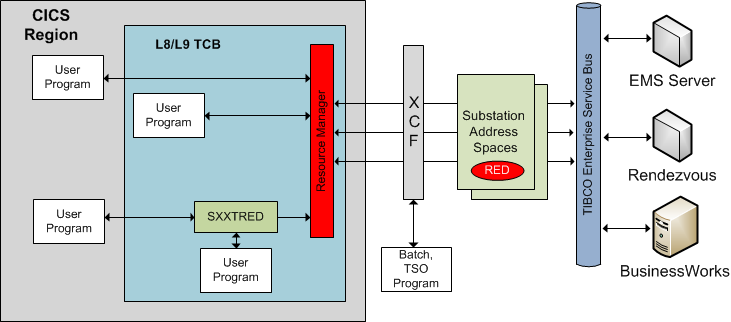Synchronous Message Transfer
Use the synchronous message transfer method to transfer large messages (fire and forget), or initiate request/reply sequences to other applications or external services within the reach of ESB.
The synchronous message transfer method is typically used for request/reply scenarios. You can also use this type of message transfer for low or medium volume fire and forget scenarios.
The user application would receive a dedicated listener from Substation ES to publish the messages on until it receives a signal from the sender or user application that a message is the last message to be sent or received, or until an inactivity timeout occurs.
The following figure shows the message flow of the synchronous message transfer service:
Copyright © Cloud Software Group, Inc. All rights reserved.

